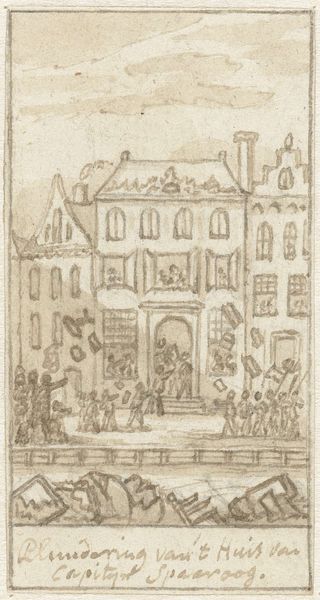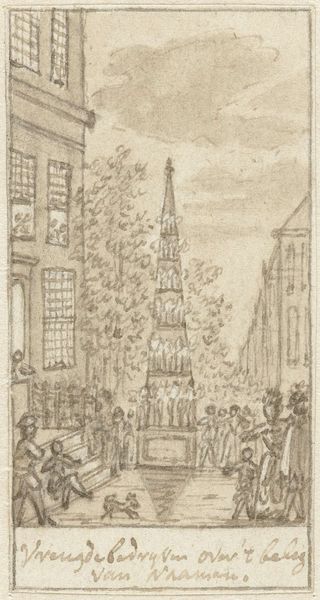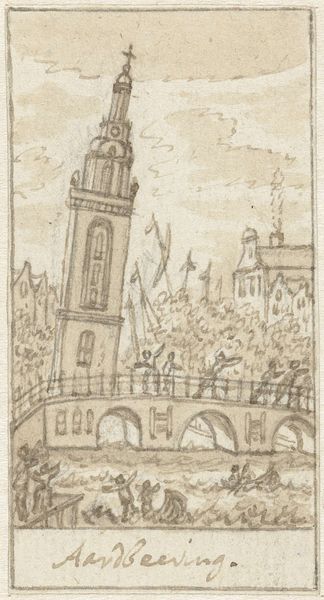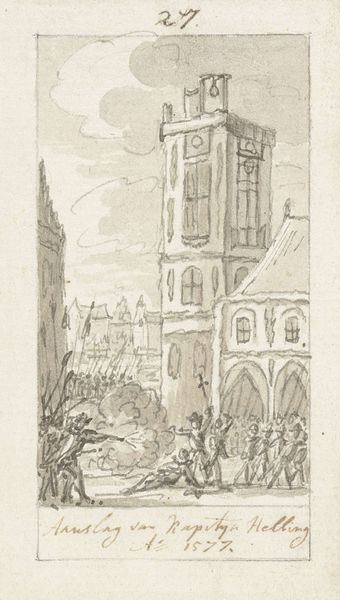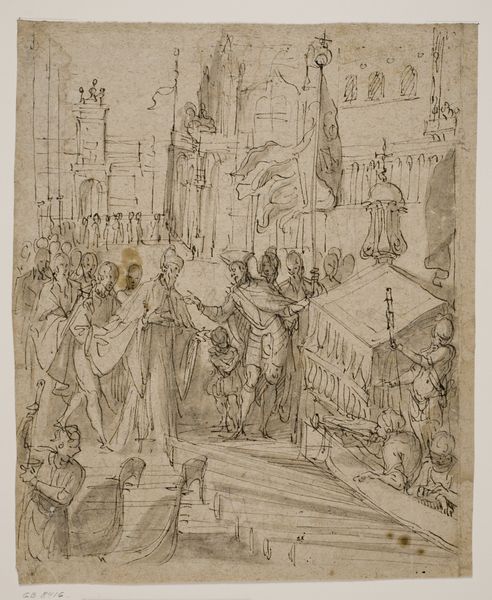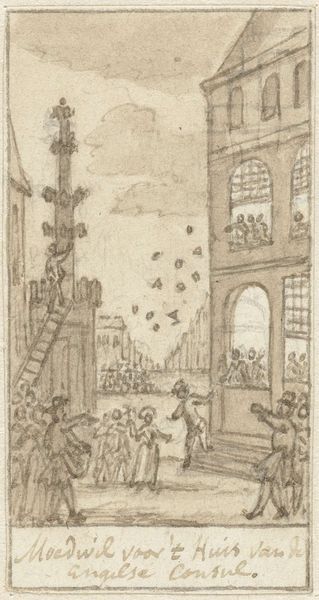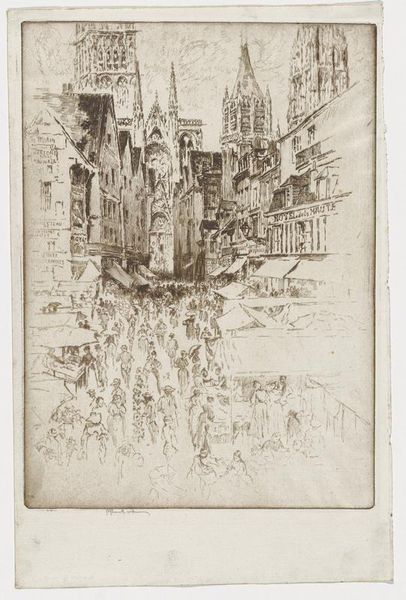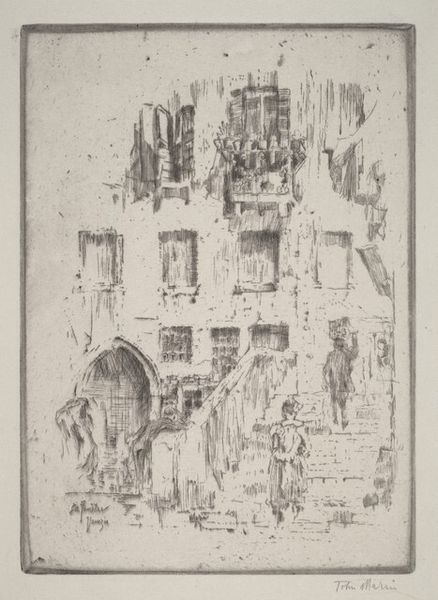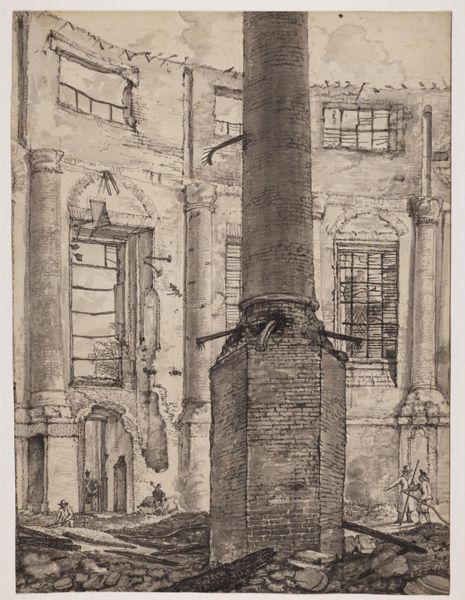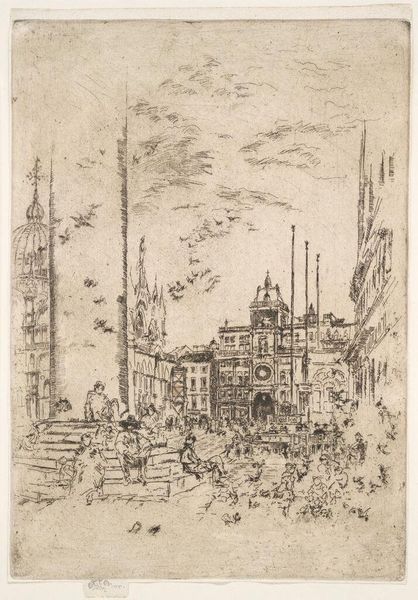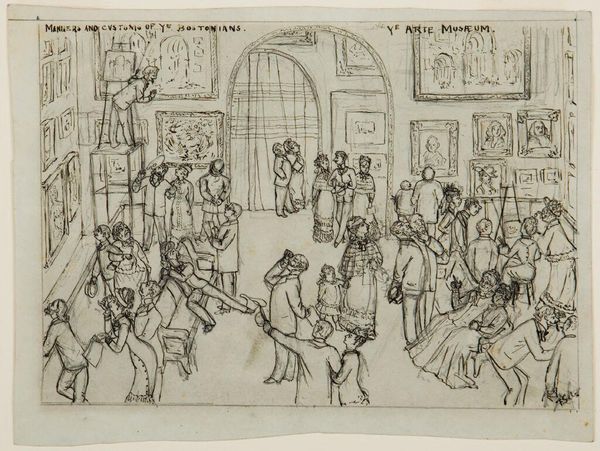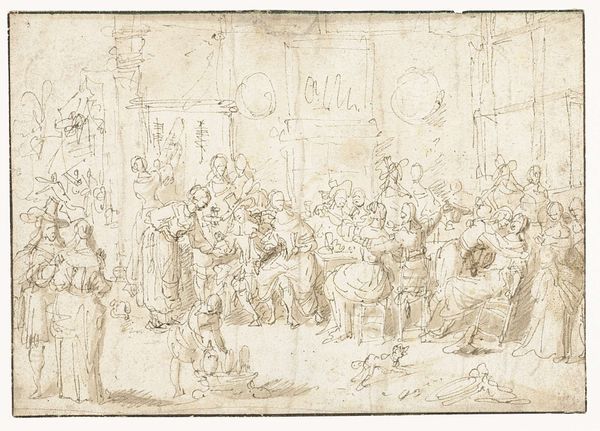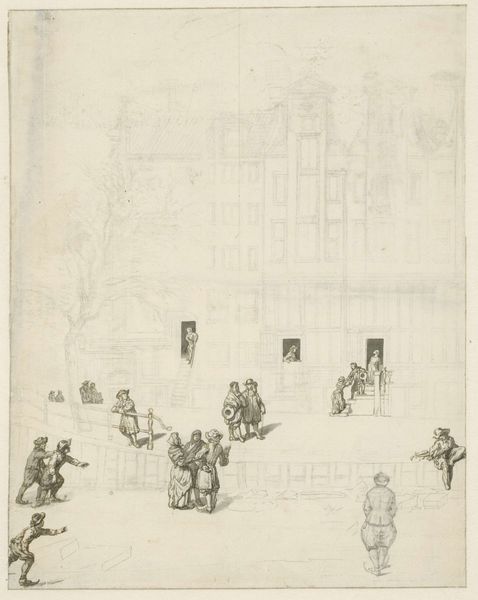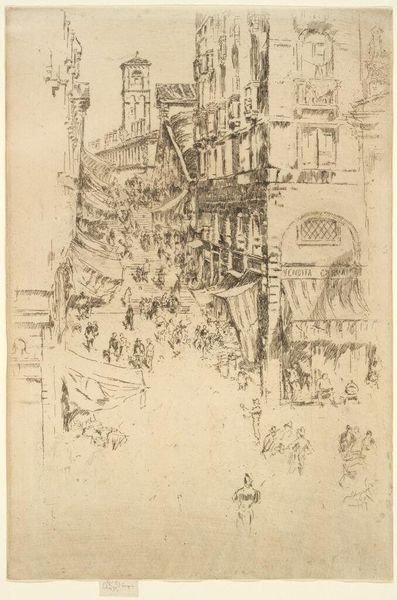
Plundering van het Pintohuis tijdens het Aansprekersoproer te Amsterdam, 1696 1779 - 1781
simonfokke
Rijksmuseum
drawing, ink, pen
drawing
pen drawing
dutch-golden-age
figuration
ink
pen
cityscape
genre-painting
history-painting
realism
Dimensions: height 82 mm, width 44 mm
Copyright: Rijks Museum: Open Domain
Curator: This pen and ink drawing offers a glimpse into a tumultuous episode in Amsterdam’s history. Entitled “Plundering van het Pintohuis tijdens het Aansprekersoproer te Amsterdam, 1696”, it was created by Simon Fokke between 1779 and 1781. Editor: My first impression is chaotic energy, even in the static lines of the drawing. You can practically hear the mob's shouts, or the breaking glass. It’s really evocative, despite the simple medium. Curator: Indeed. It depicts the 1696 riots sparked by funeral announcers, or "aansprekers", who protested reforms that threatened their livelihood. The scene centers on the ransacking of the house of Isaac de Pinto, a wealthy Jewish merchant. This imagery became politicized through its subsequent use as an anti-Semitic propaganda tool. Editor: It’s fascinating how a simple pen drawing becomes a political object, especially when we consider the physical effort behind it. You know, the preparation of the ink, the sourcing of the paper... those things aren't always at the front of one's mind when thinking about such refined forms. Curator: Precisely. Fokke's drawing participates in a broader trend of history painting in the Netherlands that romanticizes or moralizes such events for a viewing public. Here, it’s presented almost as a genre painting – capturing a supposedly authentic slice of Amsterdam life. Editor: What really strikes me are the textural qualities Fokke coaxes from seemingly simple materials. Note the details in the clothes, contrasted against the more rigid lines depicting the building itself. These are direct choices that elevate certain facets of life over others. There’s a dialogue between order and disorder expressed materially in that contrast. Curator: And that contrast underscores the very social and economic fault lines exposed by the riot. It demonstrates a fear of commerce held by parts of the working class. It really illustrates the precarity of certain crafts during periods of urban reform. Editor: I agree, and I also think focusing on materiality reminds us that Fokke, the artist, isn't just passively recording here – his selection and preparation of the materials contributes directly to our impression. The rioters and buildings are depicted through particular social and artistic traditions of the period. Curator: Considering the layered history of the image, and Fokke's choices in portraying it, helps reveal the complexities embedded within this seemingly simple snapshot of a past event. Editor: Absolutely. It really shows how an artwork is a convergence of labor, material, and sociopolitical narratives.
Comments
No comments
Be the first to comment and join the conversation on the ultimate creative platform.
